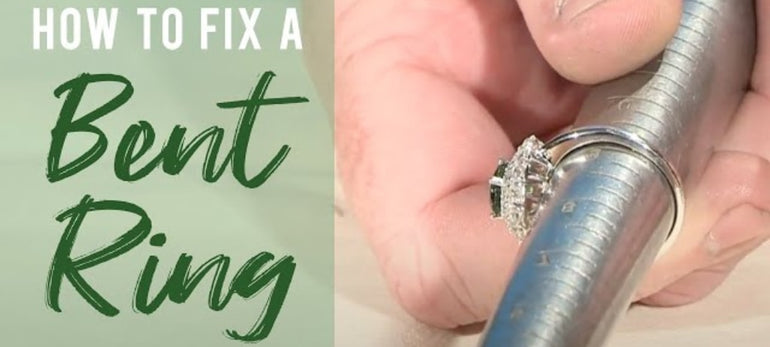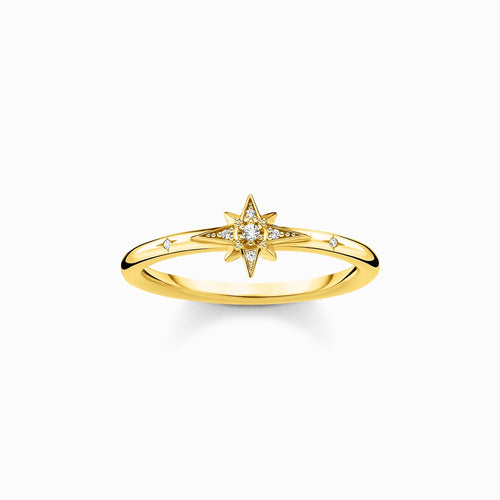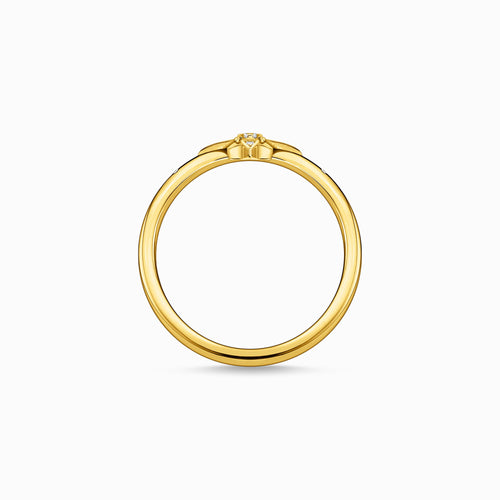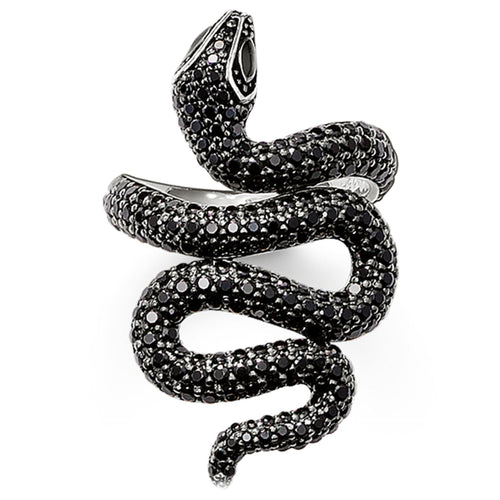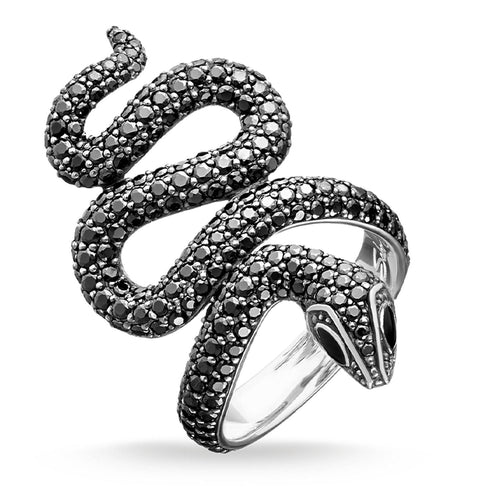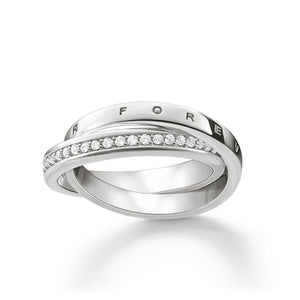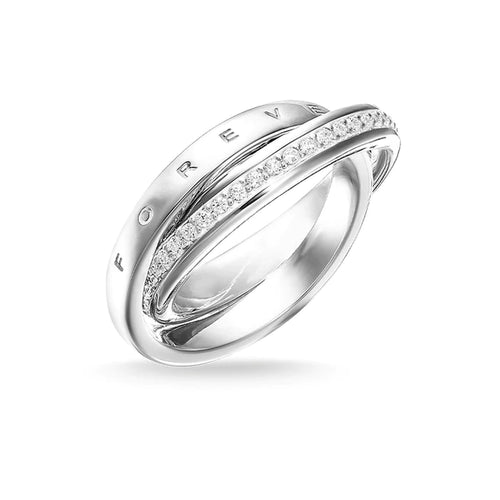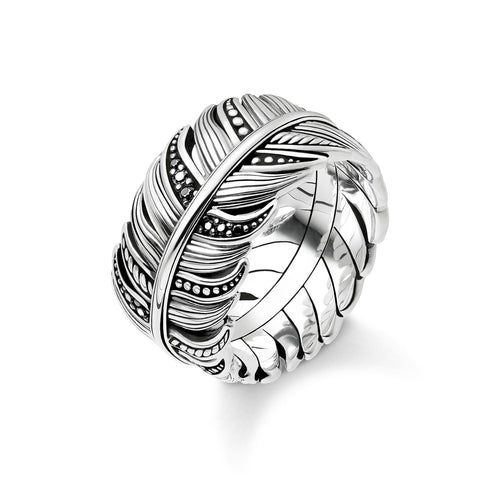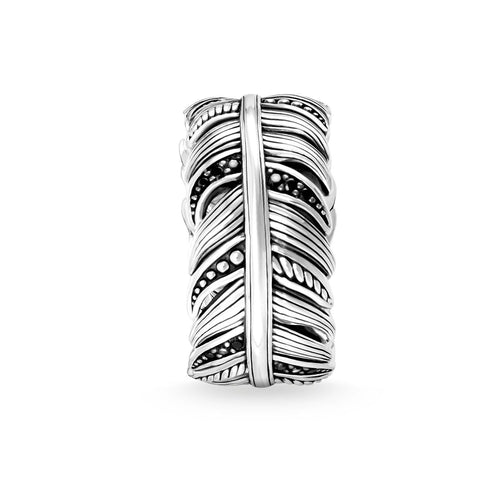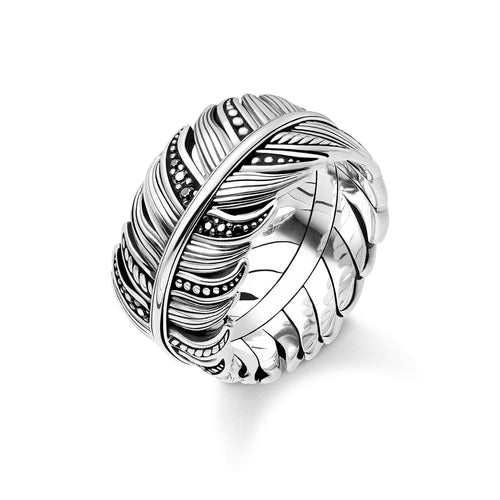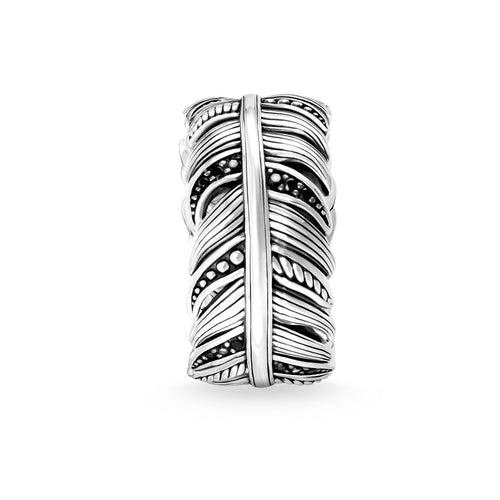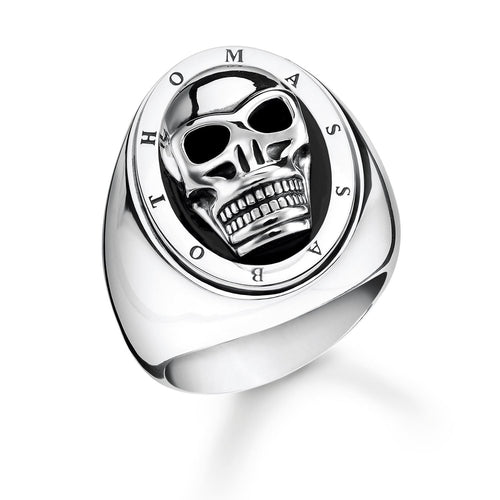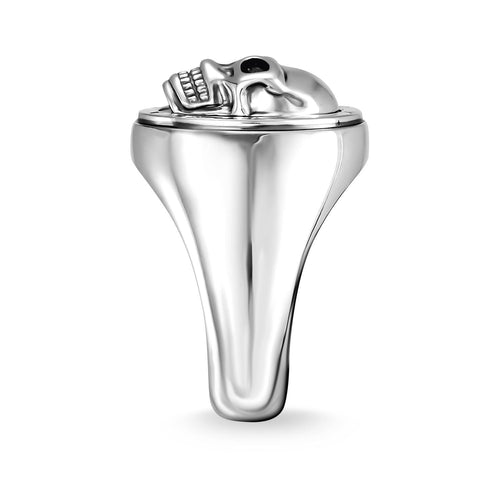Rings are cherished pieces of fine jewelry that often hold significant sentimental value. However, they can be susceptible to bending, which may lead to a loss of their original shape and structural integrity. Understanding the factors that cause a ring to bend is crucial for maintaining its appearance and longevity. This guide delves into the properties of metals like gold, platinum, and sterling silver, and explores how daily wear and tear, environmental factors, and physical impact contribute to ring bending.
Key Takeaways:
-
Material Composition: Softer metals, such as gold and silver, are more prone to bending.
-
Daily Activities: Activities like heavy lifting and exposure to harsh chemicals can affect the durability of a ring.
-
Design Factors: Elements like the ring's shank and overall ring design play a role in its resilience.
By recognizing these factors, you can better protect your engagement rings, wedding bands, and other precious pieces of jewellery.
Understanding Ring Materials

When it comes to rings, the materials used play a significant role in their durability and likelihood of bending. Let's dive into the world of metals and see how they affect your favorite pieces of fine jewelry.
Types of Metals Used in Rings
The most common metals used in ring crafting include gold, silver, and platinum. Each has unique properties that contribute to the overall engagement ring and design. For instance, a platinum ring is known for its durability and resistance to tarnish, making it a popular choice for engagement rings. However, platinum can still be susceptible to scratches and bending over time, especially under pressure or during heavy lifting.
On the other hand, gold comes in various purities, from 10K to 24K. The higher the karat, the softer the metal, which can lead to ring bending or a bent ring. White gold is often mixed with other metals like nickel to enhance its strength, while sterling silver is known for its affordability but can also make rings bend easily due to its softer nature.
Properties That Affect Durability
The softness of a metal greatly influences how easily a ring can become deformed. Soft metals like gold and silver are more prone to becoming bent or even broken if subjected to too much force. For example, softer metals can easily bend when exposed to daily activities like gripping a steering wheel or handling heavy lifting. Even exceptionally soft metals can warp with minimal force, altering the ring's shape from its perfectly round form.
The Role of Ring Design and Structure
The design of a ring is not just about aesthetics; it also plays a crucial role in its durability. The ring's shank—the band part that wraps around the finger—can vary in thickness and width. Thin bands, while delicate and elegant, are more likely to bend or become bent rings over time. Additionally, the setting of the stones or diamonds can affect the ring's structure. A poorly designed setting can weaken the overall structure of the ring, making it more susceptible to damage.
Whether you're wearing a beautiful ring made of gold, platinum, or sterling silver, understanding these materials can help you care for your jewelry better and avoid the common pitfalls that cause ring bending. Remember, a little knowledge about the metal and design can go a long way in maintaining the beauty and longevity of your cherished wedding band or engagement ring.
Common Causes of Ring Bending

Physical Impact and Pressure
Rings are delicate pieces of fine jewelry, and even the most robust platinum ring can succumb to bending under certain conditions. One of the most common causes of a bent ring is physical impact. Everyday actions like heavy lifting or gripping a steering wheel with force can apply significant pressure to the ring's shank. This pressure, especially on softer metals like gold or sterling silver, can cause the ring to lose its original shape. Imagine the force needed to grip a weight or turn a steering wheel, all of which can subtly or dramatically bend your ring over time.
Daily Wear and Tear
The phrase "wear and tear" is a catch-all for the minor damages that accumulate from daily life. Rings, especially those worn frequently like an engagement ring or wedding band, are constantly exposed to minor impacts and frictions. Actions like clapping your hands, typing, or even putting your hands in your pockets can cause wear on the metal. Over time, this wear can lead to a ring bent or misshapen.
Many people wear rings daily without realizing how these subtle actions can affect them. For example, washing hands, applying lotion, or even cooking can expose the ring to conditions that contribute to bending. The ring's shape can also be affected by the way it sits on the finger, especially if the ring size is slightly off, causing it to twist and turn, increasing the chances of deformation.
Environmental and Chemical Factors
It's not just physical actions that can cause a bent ring; environmental and chemical factors play a role too. Exposure to harsh chemicals found in household cleaners, perfumes, and even swimming pool water can weaken the metal. Over time, these chemicals can erode the metal, making it more prone to bending. Temperature changes can also affect the metal, causing it to expand or contract, which can lead to a thin, bent ring. For example, platinum is generally resistant but can still suffer from ring bending if subjected to extreme conditions.
Another factor to consider is wearing rings in activities that involve water exposure, such as swimming or washing dishes. Water can make your fingers slippery, increasing the risk of the ring sliding off and potentially getting damaged or bent. Furthermore, prolonged water exposure can weaken certain metals, making them more susceptible to bending or breaking.
In conclusion, a combination of physical impact, daily activities, and environmental factors can contribute to the bending of rings. By understanding these common causes, you can take steps to avoid bending and maintain the beauty and structure of your cherished pieces. Remember, whether it's a new ring or a worn family heirloom, a little care goes a long way in preserving its shape and value.
Identifying and Preventing Bent Rings

Signs Your Ring is Bending
One of the first things you'll notice when your ring is bending is a subtle change in its original shape. A bent ring may no longer fit comfortably or might feel slightly twisted. You might observe that the ring's shank—the circular band part—doesn't sit as perfectly round as it used to. Another sign is that the ring feels tighter or loose on your finger, indicating that the ring size might be off due to deformation. If you see any visible distortions or the setting for the stones seems misaligned, it's a clear indicator that your ring bent. This is especially common in softer metals like gold or sterling silver, which can easily bend under pressure.
How to Prevent Ring Bending
Preventing ring bending involves a mix of proper care and smart practices. First, consider avoiding wearing your rings during activities that could cause damage, such as heavy lifting or intense physical work. This is particularly important for delicate fine jewelry pieces like an engagement ring or a beautiful ring made of exceptionally soft metals.
Proper storage is another crucial factor. When you're not wearing your rings, store them in a dedicated jewelry box or a soft pouch to protect them from scratches and impacts. It's also wise to avoid exposing your rings to harsh chemicals, which can weaken the metal over time. Common household items like cleaning agents and even personal care products can cause damage, leading to ring bending.
Regular inspections by a jeweler can help catch any issues before they become serious. A professional can check the diamond for signs of wear, ensure the ring's shape is intact, and provide valuable advice. Visiting a jewelry store for periodic check-ups and jeweler inspections can go a long way in maintaining the integrity of your rings.
Fixing a Bent Ring
If you have a bent ring, don't panic. There are various options to fix the issue. For minor ring bends, a jeweler can often fix the ring on-site, restoring it to its original shape. In more severe cases, the ring may require re shanking, where the damaged part of the ring's shank is replaced entirely. This process involves more work and might take a few days, but it's worth it to maintain the quality and appearance of your fine jewelry.
When deciding on the best course of action, consulting with experienced jewelers is key. They can provide a thorough assessment and recommend the most suitable repair options, ensuring that your ring remains as stunning as the day you first wore it.
Special Considerations for Different Ring Types

Engagement Rings and Wedding Bands
Engagement rings and wedding bands are often made with softer metals like gold or sterling silver to achieve intricate ring designs. These beloved pieces are typically worn daily, making them more susceptible to ring bending. The delicate nature of diamonds and other stones set in these rings requires extra care. To avoid bent rings, it's essential to avoid wearing them during activities that could cause damage, such as heavy lifting or working with harsh chemicals. Regular inspections at a jewelry store can help ensure the settings are secure and the ring maintains its original shape.
Platinum Rings vs. Other Metals
Platinum rings are known for their durability and resistance to tarnish, making them a popular choice for fine jewelry. However, despite their robustness, even platinum can experience ring bending under significant pressure. Unlike softer metals, platinum tends to scratch rather than bend, which can make any ring bent more noticeable. Proper care, including regular maintenance and cleaning, can help preserve the metal's appearance. It's advisable to store platinum rings separately from other jewelry to prevent scratches and damage.
Rings with Stones: Diamonds and Others
Rings adorned with diamonds or other stones require special attention due to their settings. The placement of the stones can affect the overall structure of the ring, making it more vulnerable to bending if not properly maintained. Stone settings can loosen over time, particularly if the ring is subjected to daily wear and tear. It's crucial to check for any loose stones regularly and to have a jeweler tighten the settings as needed. Additionally, rings with larger stones are more likely to get caught on clothing or other objects, increasing the risk of damage.
Whether you happen to own a beautiful ring with a diamond centerpiece or a simple wedding band, understanding the unique needs of different ring types can help you protect your investment and enjoy your jewelry for years to come.
Frequently Asked Questions

1. What causes a ring to bend?
Rings can bend due to several factors, including wear and tear, heavy lifting, and exposure to harsh chemicals. Softer metals like gold and silver are particularly prone to bending. Additionally, daily activities like gripping a steering wheel or typing can gradually alter or break a ring's shape, leading to a bent ring.
2. How can I prevent my ring from bending?
To avoid bending, it's best to avoid wearing your rings during activities that put stress on the metal, like exercising or doing housework. Storing your fine jewelry properly and keeping it away from harsh chemicals can also help. Regular check-ups at a jewelry store can catch early signs of wear and tear.
3. What should I do if my ring is already bent?
If you notice your ring has bent, it's important to consult a jeweler. They can assess the damage and recommend the best way to fix repair it, whether through a simple adjustment or a more involved repair like re shanking. Trying to fix a bent ring at home can cause further damage, especially with soft metals.
4. Are certain rings more prone to bending?
Yes, rings made of softer metals like gold and sterling silver are more likely to bend. Platinum rings are more durable than soft metal, but can still suffer from ring bending over time. Rings with intricate ring designs or thin bands are also at higher risk.
5. Why do rings need to be resized?
Rings may need resizing due to changes in finger size, which can occur from weight fluctuations, temperature changes, or swelling. A proper ring size ensures the ring fits comfortably and reduces the risk of a ring bent or loose stones.
By understanding these common concerns, you can better care for your beautiful rings and ensure they remain in their original shape for years to come.
Conclusion

Understanding what causes a ring to bend is essential for anyone who treasures their fine jewelry. Whether it's a delicate engagement ring, a durable platinum ring, or a classic wedding band, knowing the most common reason or culprits behind bent rings can help you take preventative measures. From wearing your rings with care to avoiding harsh chemicals and heavy lifting, these simple steps can prevent a bent ring and maintain its original shape.
Regular visits to a trusted jeweler can also ensure your ring remains in pristine condition. So next time you admire your beautiful ring, remember the importance of proper care and maintenance. After all, a well-cared-for ring not only retains its beauty but also its sentimental value. Stay vigilant and keep your rings as perfectly round as the day you got them!
Gift Ideas For You


